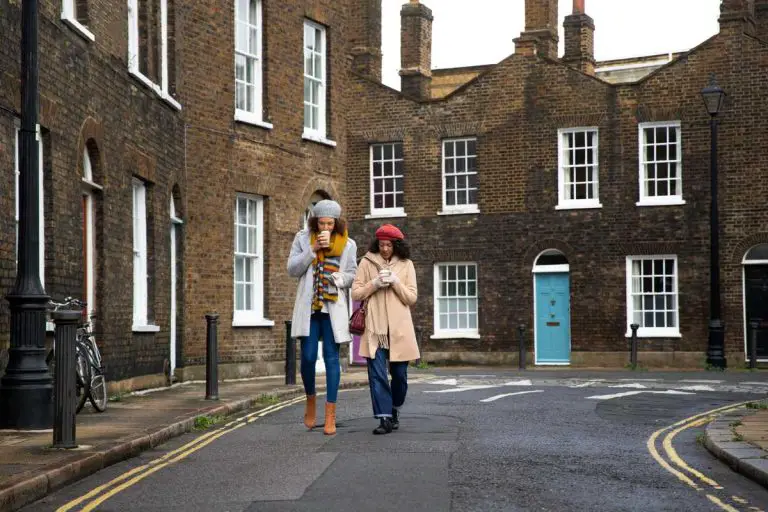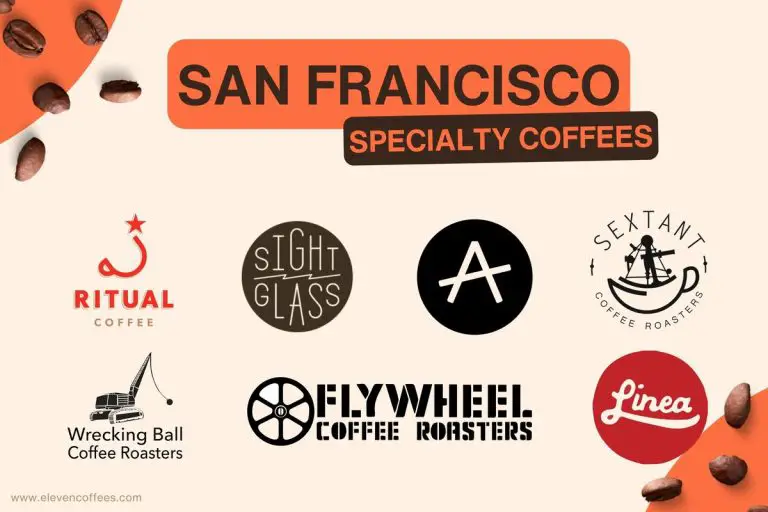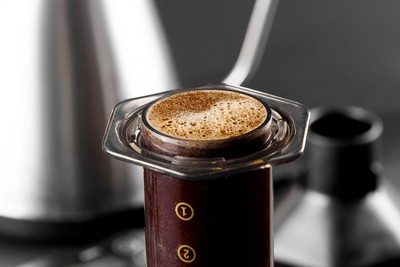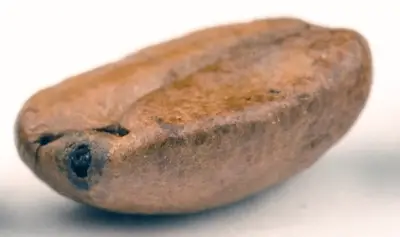Which Coffee Has the Least Caffeine? A Detailed Guide
If you’re someone that has a sensitivity to caffeine, the sheer amount of different coffee drinks on offer might leave you wondering, Which coffee has the lowest caffeine content?
The coffee with the least caffeine is decaffeinated coffee, which is at least 97 percent caffeine-free. For regular caffeinated coffee, the coffee beverage with the lowest caffeine content is a single espresso. A single espresso has 45mg of caffeine whereas a cup of drip filter coffee has 95mg.
Sounds simple, right? There’s actually a lot more to it as many other factors determine the caffeine content of your cup of coffee.
The coffee with the least caffeine
Most associate espresso coffee with a high level of caffeine due to how intense and bitter it is, so it may come as a surprise to you that espresso is the least caffeinated of all the different types of coffee beverages.
However, the only reason that espresso contains the least amount of caffeine is because of its small size. A typical single espresso is only around 25ml (0.85fl oz).
Unless you live in Italy, you’re probably more used to a large mug of filter coffee. Because of the amount of ground coffee used to make an entire mug, filter coffee contains a much higher caffeine content.
For a typical 250ml (8.5fl oz) cup of filter coffee, you need around 15g (0.53oz) of ground coffee. For a single espresso, that figure is just 8g (0.28oz). Less coffee, less caffeine.
It’s a little unfair to compare a 25ml beverage with one that’s ten times its size. The correct approach is to compare the two beverages in terms of their caffeine concentration by volume.
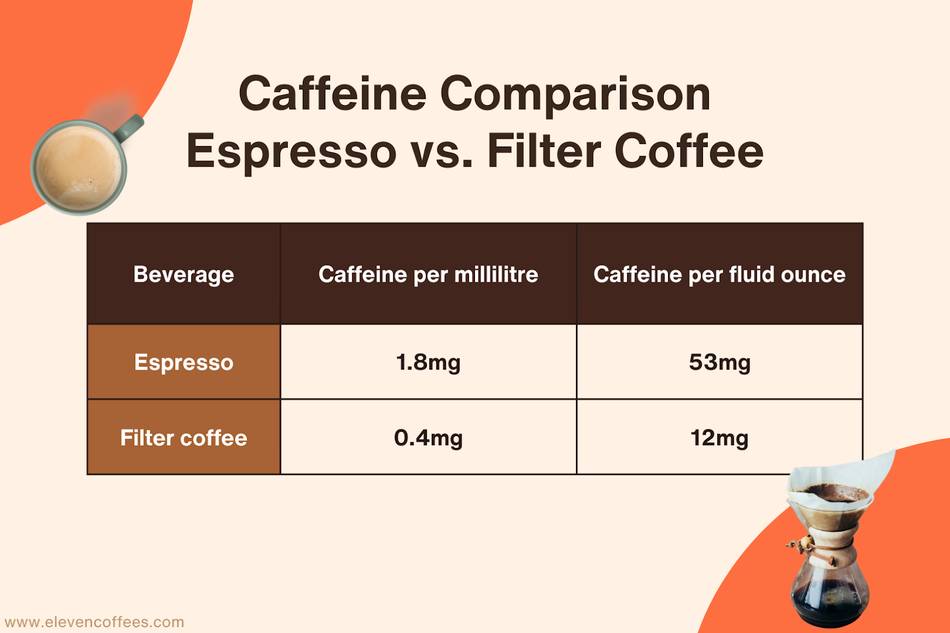
Looking at the table, we can see that espresso has a caffeine concentration that’s 4.5 times higher than filter coffee.
In order to achieve the same caffeine content as a 250ml cup of filter coffee, you would only need a 55ml serving of espresso.
And if you were to drink 250ml of espresso, you’d consume a whopping 450mg of caffeine, which is more than the daily recommended intake.
So what can we conclude?
From a beverage serving perspective, because espresso is served in small volumes, it contains less caffeine than filter coffee.
But from a volume perspective, espresso has much more caffeine than filter coffee due to its higher concentration.

How much caffeine is in a cup of coffee?
Here’s a table comparing the typical caffeine content of the most popular coffee drinks alongside other popular caffeinated beverages.

Does instant coffee have less caffeine?
Most instant coffees contain less caffeine than coffee made with whole coffee beans. A 250ml (8.5fl oz) cup of instant coffee contains 65mg, and a 250ml cup of whole bean coffee contains 100mg.
The way that instant coffee is made into a concentrate means that less coffee granules are needed to make a full mug.
The instant coffee manufacturing process is absolutely fascinating. Check out the amazing 9 stage process to discover how Nestlé creates their world-famous Gold Blend.

How much caffeine is in decaf coffee?
On average, a 250ml (8.5fl oz) cup of decaf coffee contains 6mg of caffeine whereas the same serving of regular caffeinated coffee contains 100mg of caffeine.
By law, decaffeinated coffee has to be 97 percent caffeine-free in the US and 99.9 percent free in the EU.


If you’re looking to consume as little caffeine as possible, then decaf instant coffee is the best choice. Also, look out for the more expensive arabica decaf as that will contain around half the caffeine content of other cheaper decaf coffees.
This 100 percent arabica instant decaf by Percol is inexpensive and the perfect choice as you won’t find a coffee lower in caffeine.
If you prefer ground coffee, we recommend this organic 100 percent arabica decaf coffee from Sumatra. Not only is the coffee 99.9 percent caffeine-free, but it also lacks the harsh bitterness you find in most coffees.
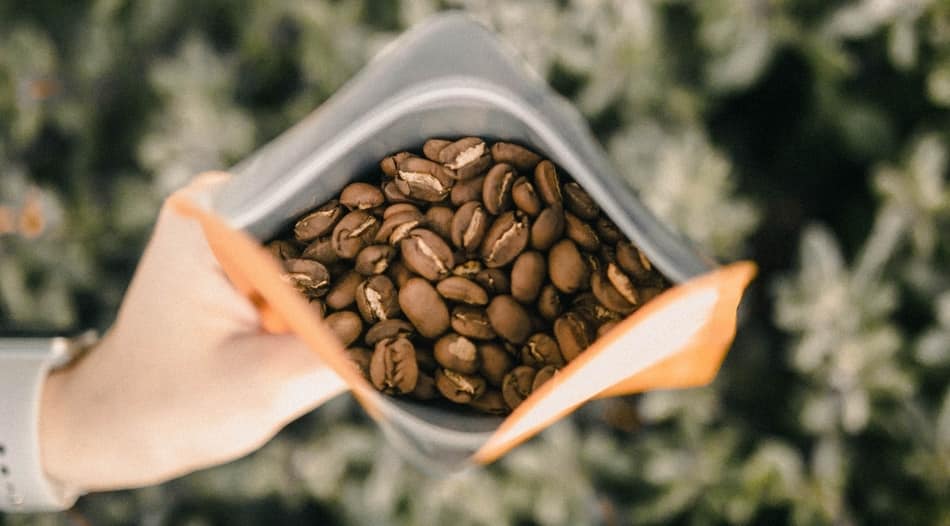
What factors influence caffeine content?
The three main factors that contribute to the amount of caffeine in your coffee are:
- Coffee quantity
- Coffee bean variety
- Coffee roast profile
1. Coffee quantity
As we’ve seen, the amount of coffee that you use has the biggest effect on the overall caffeine content of your coffee. The more ground coffee you use, the more caffeine the beverage will contain.
Different coffee makers require different coffee-to-water ratios. The highest coffee-to-water ratio by far is espresso, and the weakest is a type of filter coffee known as pour over or drip.
The Golden Cup Standard recommended by the Specialty Coffee Association of America (SCAA) is to use 55g of coffee per litre of water (1.94oz per 34fl oz).
This is a ratio that’s perfect for pour over and drip filter coffee. Use the SCAA guide as a starting ratio, and then tailor it to your tastes.
2. Coffee bean variety
Over 98 percent of the world’s coffee comes from just two species of coffee plant that are grown within the coffee bean belt.
Making up 60 – 70 percent of the world’s coffee production is the species known as arabica. Making up the majority of the remainder is the robusta species.
Arabica and robusta couldn’t be more different. Apart from the fact that arabica is highly superior in taste to robusta, arabica also contains approximately half the caffeine content of robusta.
If you’re looking to lower your caffeine content (and if you want to enjoy tastier coffee), look at buying 100 percent pure arabica coffee. It’s available as both coffee beans (whole or ground) and instant.
3. Coffee roast profile
Another factor that influences the caffeine content is how dark your coffee has been roasted. For a cup of coffee with less caffeine, look for light roast coffee beans.
Light and dark roast coffee beans contain almost identical caffeine levels; however, dark roast beans are smaller due to moisture loss caused by prolonged roasting.
Although the roasting process affects the size of the bean, it does not affect the caffeine content. The larger light roast beans have the same caffeine content as the smaller dark roast beans.
So, because more dark roast beans are needed to make up a certain weight or volume when preparing coffee, a cup of dark roast contains more caffeine.
In fact, if you measure your coffee by spoon or scoop (volume), dark roast coffee has nine percent more caffeine. And if you measure your coffee using weighing scales, dark roast coffee has 32 percent more caffeine.
By the way, measuring your coffee using scales actually improves your cup of coffee. For more information, check out 50 Tips for Making Better Coffee.
So what about enjoying a low caffeine coffee at your local cafe, which should you choose?
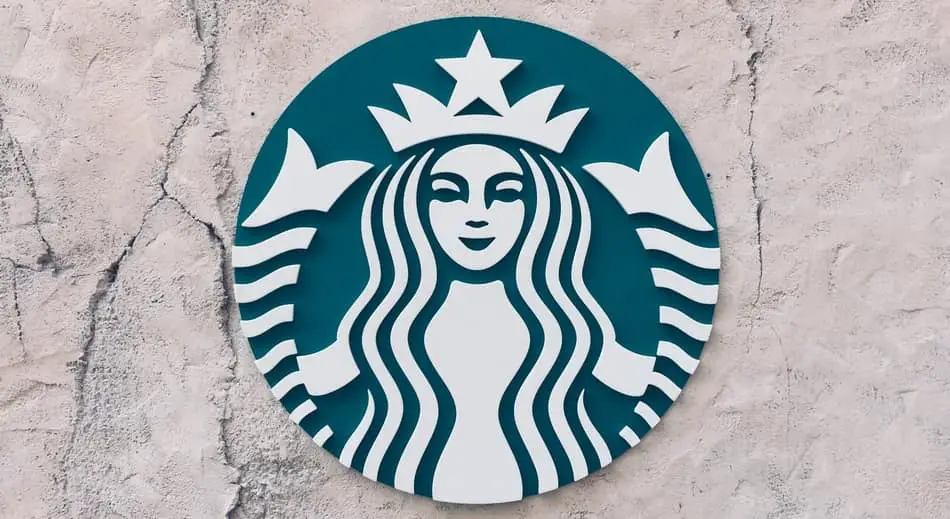
Which Starbucks coffee has the least caffeine?
The Starbucks coffee drink with the least caffeine is the Decaf Pike’s Place Roast. When prepared as a filter coffee, an 8oz (237ml) cup contains 15mg of caffeine. Next up is the solo espresso and 8oz Caffè Misto, which both contain 75mg of caffeine.
Starbucks also sells a blonde roast coffee, which is a very light roast. If you’ve been paying attention, you’ll know that a cup of brewed light roast has less caffeine.
However, despite being a light roast, the blonde roast drink offerings contain higher levels of caffeine due to containing more ground coffee and also because the blend is made up of the highly caffeinated robusta coffee bean variety.
Naturally low caffeine coffee
An alternative to decaf that’s becoming more and more widely available is a naturally low caffeine coffee called laurina.
Laurina is from the arabica species of coffee plant but contains significantly lower caffeine levels than most other types of arabica.
Laurina has, on average, half the caffeine content of arabica and a quarter of the caffeine content of robusta.
Unfortunately, the decaffeination process robs the coffee of a lot of its natural flavours. This leaves decaf coffee with a generic taste that may taste burned or cardboardy. Many describe this as ‘the decaf taste’.
The excellent thing about laurina is the fact that it’s naturally low in caffeine, meaning it hasn’t undergone any artificial processing to reduce its caffeine content.
Laurina displays excellent flavours, which is true of the superior tasting arabica coffee variety.
Laurina is a light coffee with characteristics that you would more likely associate with a tea. It has high levels of sweetness and a pleasing acidity with no bitterness. Laurina displays fruity flavours and delicate, floral aromas.
If you would like to know more about laurina and where you can purchase it, make sure to check the article out by clicking the link above.

